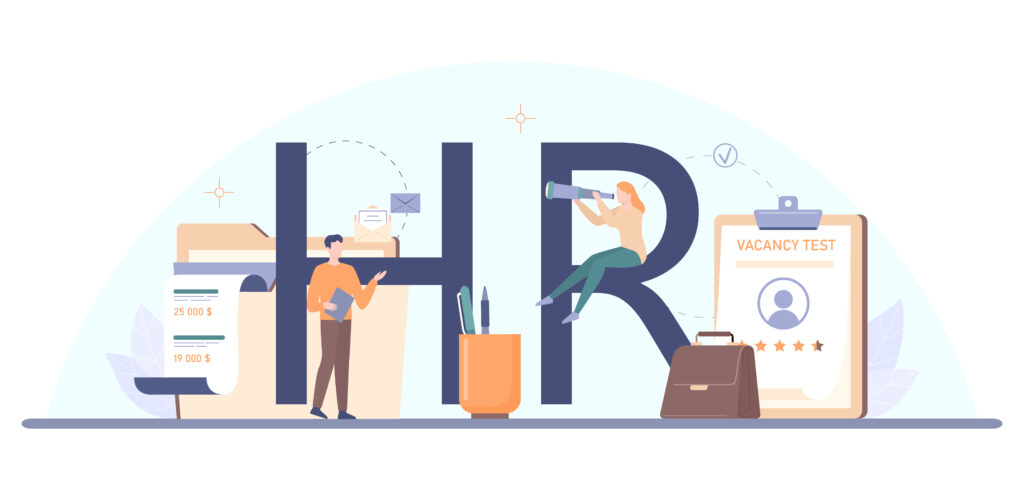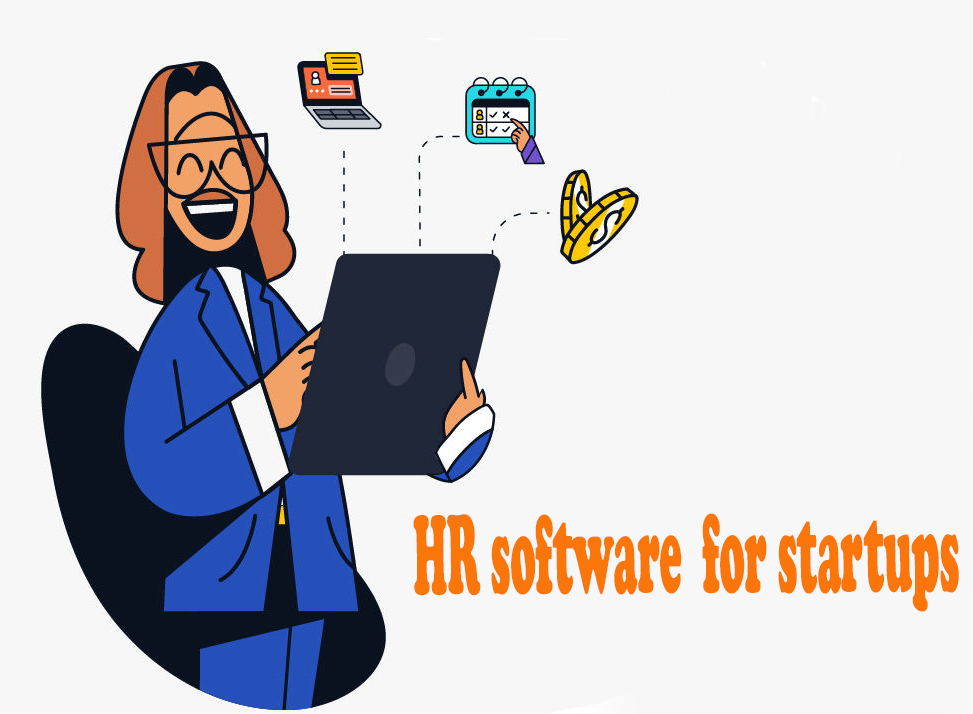Breaking into the world of human resource management applications can seem like a daunting task, especially if you’re unfamiliar with its ins and outs.
Browsing through countless online forums, blogs, and LinkedIn posts might lead you to believe that without prior experience or extensive technical knowledge in HR software solutions, it’s nearly impossible to make an informed choice.
This is far from the truth.
In fact, many businesses today are successfully leveraging human resource management applications to streamline their HR processes – even those who were once novices in this field.”By 2025, over 60% of businesses will have adopted AI-powered HR technology.”— Gartner Research
The rise of AI-driven HR apps is real.
The Power of HR Apps in Centralizing Employee Lifecycle Management
Human resource management applications are revolutionizing the way businesses manage their employee lifecycle. From recruitment to termination, these tools provide a centralized hub for all aspects of human resources (HR), enhancing efficiency and streamlining processes.
Hiring: The First Step Towards Efficiently Managing Employee Lifecycle Complexities
A robust HR app simplifies recruiting with automated job postings, applicant tracking systems (ATS), and pre-screening capabilities. This helps to save time and ensures that the best candidates are chosen from the outset.
For instance, platforms like Oracle HCM Cloud Talent Acquisition Suite offer powerful ATS features for seamless candidate sourcing, screening assessment, and selection process which significantly reduces the time-to-hire ratio.
Maintaining Performance Management & Retention Efforts
Beyond the hiring stages lies another critical aspect – performance management. A comprehensive HR application should facilitate ongoing feedback loops between managers and employees fostering transparency within teams, thereby promoting a culture of continuous improvement.
An example here would be SuccessFactors’ suite which provides real-time analytics-driven insights helping today’s HR manager make informed decisions regarding promotions or skill development initiatives.
Revolutionize your business with HR apps. From recruitment to termination, these tools centralize and streamline all aspects of HR. Say hello to efficient hiring, performance management & retention efforts. #HRtech #EmployeeLifecycleManagement Click to Tweet
Top HR Software Leaders: A Comparative Analysis
In the arena of human resource management applications, several titans stand out. Among them are UKG Pro, Oracle HCM Cloud, Dayforce, SuccessFactors, and ADP Workforce Now.
The prowess of UKG Pro lies in its payroll gateway, a crucial tool for today’s HR manager aiming to overcome current practical HRM challenges with precision while ensuring compliance adherence. The user-friendly design is another feather in its cap that enhances ease-of-use both for the HR team and employees.
Differentiating itself from others by focusing on analytics rather than payroll alone is Oracle HCM Cloud. This software offers robust reporting modules which play an instrumental role in decision making based on employee performance trends data insights.
Features Not Fully Supported According to Our Data
No matter how powerful these tools may be, “there’s no such thing as perfect”. Some users have reported limited customer service capabilities within these apps – an area requiring attention considering today’s growing service sector demands superior support services.
A feature yet to achieve full potential across many platforms seems to be automatic leave request functionality – a critical aspect when it comes down to managing employee lifecycle complexities efficiently through automation practices.
Suitability Based On Company Size
Selecting suitable human resource management applications largely depends upon your company size along with specific needs. While larger corporations might find comprehensive solutions like Dayforce or SuccessFactors beneficial due to their wide-ranging functionalities, smaller enterprises could potentially derive more value from simpler systems such as ADP Workforce Now offering introductory HR features without overwhelming complexity.
Navigating the HR software landscape? UKG Pro excels in payroll, Oracle HCM Cloud shines with analytics. Yet, no tool is perfect – customer service and leave request features need improvement. Remember, your choice should align with company size & needs. #HRM # Click to Tweet
The Role of AI in Streamlining HR Processes
Just as the digital marketing revolution reshaped business landscapes, artificial intelligence (AI) is transforming human resource management applications. With AI-based benefits advisors at their disposal, businesses are now equipped to automate internal service processes and manage employee lifecycle complexities efficiently.
This isn’t just about saving time; it’s about enhancing accuracy too.
In the realm of routine tasks like leave balance inquiries or policy clarifications, solutions such as IBM Watson Talent utilize AI for prompt responses. This provides not only a quicker response for staff, but also allows HR personnel to dedicate their efforts to more important projects.
Precision Wage Calculation with Machine Learning
Hourly wage calculation may seem straightforward until you consider factors like overtime pay, holiday rates, and shift variations. Herein lies another area where machine learning shines – precision wage calculations. ADP’s Time & Attendance solution leverages advanced algorithms to accurately calculate these variables based on historical patterns and predictive analysis.
No more costly legal disputes over incorrect payments.
A Proactive Approach Towards Employee Retention
Facing today’s important human resource issues head-on requires a proactive approach powered by data-driven insights, especially when dealing with challenges like employee retention. Predictive analytics can identify potential turnover risks before they become an issue by analyzing key metrics such as job satisfaction levels or recent performance ratings, among others.
Much akin to how one prepares situational questions ahead of a big interview, this early detection system allows companies to prepare strategies aimed at proactively mitigating high turnover costs – thereby ensuring the talent pool remains robust while conserving resources spent on hiring replacements.
Revolutionize your HR with AI. Automate routine tasks, enhance accuracy in wage calculations and proactively tackle employee retention. Say goodbye to costly disputes and hello to efficiency. #AIinHR #FutureOfWork Click to Tweet
Streamlining HR with Human Resource Management Applications
Discover how human resource management applications streamline HR processes, boost engagement, and manage the employee lifecycle efficiently.
Enhancing Employee Engagement through Innovative Practices
The impact of HR apps in boosting employee engagement is significant. By using data-driven methodologies, these applications create a work environment that motivates employees and enhances their productivity.
Let’s consider the practice of regular feedback sessions:
A popular saying goes, “Feedback is the breakfast of champions.” And it holds true here as well. These platforms provide an open forum for communication where employees can share their ideas or concerns. This not only makes them feel valued but also helps organizations identify areas needing improvement.
Influence on Workforce Forecasting
Data gathered from such engagement practices has far-reaching implications for workforce forecasting too. For instance, by analyzing patterns in employee behavior and responses, companies can predict future trends like attrition rates or potential skill gaps before they become issues.
This kind of predictive analysis paves the way for proactive decision making – enabling businesses to be prepared with the right talent at the right time while minimizing disruption due to unexpected staff changes.
Data-Supported Benefits Scenario Modeling
Moving further into our discussion about innovative practices supported by HR apps: benefits scenario modeling – this method projects different outcomes based on various benefit options provided by your organization.
Bear in mind that benefits scenario modeling leverages comprehensive data collection mechanisms within these applications, providing valuable insights into what kinds of compensation packages are most appealing to your team members. This information aids firms in crafting competitive remuneration plans, attracting top-tier professionals while encouraging long-term commitment from existing personnel.
Unleash the power of HR apps. Streamline processes, boost engagement, predict workforce trends and create competitive remuneration plans. Be proactive with data-driven decision making. #HRtech #EmployeeEngagement Click to Tweet
Facilitating Seamless Inter-Departmental Data Syncing with HR Apps
In the world of human resource management applications, a standout feature is their ability to facilitate seamless inter-departmental data syncing. This functionality doesn’t just bolster communication within organizations but also streamlines workflow for improved overall efficiency.
The modern business landscape demands interconnectedness and real-time access to information.
Silos are anathema in today’s digital age. When departments function in isolation, duplications occur, and decision-making slows down due to a lack of instant data availability. Enter HR apps like Oracle HCM Cloud, designed specifically to break these barriers through robust integration capabilities that ensure a smooth flow of info across all units.
This means any change made in one department reflects instantly on relevant systems without requiring manual intervention from either the HR team or other employees. For instance, if an employee gets promoted resulting in role changes within your organization, this modification would automatically reflect on the payroll system, ensuring accurate salary processing for the next cycle.
Organizational Efficiency: The Impact
Data syncing plays a pivotal role by eliminating redundancies and enhancing accuracy via automated updates when it comes to boosting operational efficiency. Data syncing ensures that all individuals have the most recent info, enabling faster decisions to be made, thereby reducing time and assets.
A culture of transparency breeds trust among stakeholders.
All stakeholders can view pertinent data at any given point, thus promoting transparency, helping them make informed decisions based not on outdated reports or assumptions but current realities instead.
In conclusion, integrating different functional areas using advanced HR software simplifies administrative tasks while fostering a collaborative work environment that promotes productivity at every level within an organization.
Break down silos with HR apps like Oracle HCM Cloud. Streamline workflows, boost efficiency, and foster transparency by syncing data across departments in real-time. #HRtech #Efficiency Click to Tweet
Mobile Recruiting & Benefits Access – The Future of Hiring?
The digital revolution has not left the HR sector untouched. Today’s important human resource issues include leveraging technology to overcome current practical HRM challenges, and mobile recruiting is a strategy that fits this bill perfectly.
Creating Talent-Rich Applicant Pools
In today’s growing service sector, reaching out to potential candidates via their smartphones can open up new avenues for recruitment. This approach helps create talent-rich applicant pools by attracting diverse talents who might be interested in exploring opportunities beyond their current roles.
This trend does more than just simplify hiring; it facilitates seamless inter-departmental data syncing as information flows freely between recruiters and hiring managers. Not only does this make processes efficient but also ensures that no promising candidate slips through due to communication gaps.
Dashboard – Applicant Tracking
Apart from making outreach easier, mobile technology simplifies another crucial aspect of the employee lifecycle – tracking applications. Dashboard-based applicant tracking systems (ATS) are becoming increasingly popular among today’s HR managers because they offer real-time updates on each application’s progress while ensuring transparency at all stages.
An ATS doesn’t merely track applications; it aids decision-making during recruitments by providing comprehensive insights into every stage of the process right from initial screening till final selection. This reduces administrative burdens associated with manual methods, thus helping manage employee lifecycle complexities efficiently. CIO discusses top tools for managing Human Resources effectively.
The power of mobile extends beyond recruitment too. Modern HR apps now allow employees access benefits details directly from their phones, which means they have immediate access to healthcare plans or retirement contributions anytime, anywhere. Convenience like this enhances user experience significantly while reducing workload for HR teams, thereby proactively mitigating high turnover costs.
Key Takeaway:
Human resource management applications are transforming HR, from mobile recruiting to applicant tracking dashboards. They’re not only making hiring more efficient but also simplifying employee lifecycle complexities and boosting engagement by offering on-the-go access to benefits.
Leveraging Employee Self-Service for an Empowered Workforce
Top-notch HR applications today offer an empowering feature – employee self-service (ESS). ESS is a tool that allows employees to handle tasks like updating personal information or submitting expense requests. The result? A significant reduction in the administrative burden on your HR team.
The Perks of Implementing ESS
Adopting an ESS system can bring about numerous benefits. First, it fosters autonomy among your workforce by enabling them to manage their own data, such as contact details and tax forms, without having to route through the HR department. This not only saves time but also ensures accuracy in record keeping.
Besides, these systems provide round-the-clock access to crucial documents like payslips or company policies – a convenience factor highly valued in our fast-paced work environment today.
Picking an Effective Employee Self-Service System
Selecting an appropriate ESS platform could be instrumental when it comes down to user adoption rates and overall satisfaction levels within your workforce. Your ideal solution should combine intuitive navigation with powerful functionality while ensuring affordability and efficiency, as suggested by various research studies.
No compromise should be made on security features during this selection process considering how sensitive some of the managed information can be.
Cultivating Adoption Among Employees
To ensure maximum utilization post-implementation, organizations must conduct training sessions where users get hands-on experience with different features offered by platforms similar to SAP SuccessFactors’ Employee Central Service Center, etc., thereby overcoming current practical HRM challenges efficiently. Offering support materials like video tutorials or FAQs will further aid this learning process while ensuring smoother transitions into new workflows created due to adopting such technologies.
An effective communication strategy highlighting advantages associated with using these tools will play a pivotal role in driving engagement levels upwards within the organization after launch.
Key Takeaway:
HR applications with Employee Self-Service (ESS) features empower employees to manage their own data, reducing the administrative load on HR teams. Careful selection of an ESS platform, prioritizing security and user-friendliness, coupled with effective training can streamline HR processes while boosting employee engagement.
Choosing the Ideal HR Application for Your Business
Navigating through a sea of human resource management applications to find one that aligns with your business needs can be quite overwhelming. However, keeping certain factors in mind such as affordability, efficiency, and automation capabilities could help simplify this process.
Prioritizing Affordability and Efficiency
The price tag attached to an HR app is definitely worth considering when making your choice. It’s important not just to look at upfront costs but also to consider long-term value – will it provide efficient solutions for today’s HR manager?
An effective application should streamline operations by managing employee lifecycle complexities efficiently from hirings all the way down to terminations, thereby proactively mitigating high turnover costs.
Embracing Automation Capabilities
In our tech-driven world, automation features are essential components of any software tool, including those used in Human Resources Management (HRM). Automated processes save time while reducing errors associated with manual tasks – crucial aspects in overcoming current practical HRM challenges effectively.
You may want applications drawn from AI technology which offer automated benefits advisor functions similar to Oracle HCM Cloud analytics module or SuccessFactors performance management system. Oracle HCM Cloud analytics module.
Ease-of-Use: A Non-Negotiable Feature
A key factor often overlooked during selection is ease-of-use; yet its importance cannot be overstated. An intuitive interface allows smooth navigation across various modules without requiring extensive training or technical skills, both for the HR team and employees alike.
This directly influences user adoption rates, which consequently impacts overall productivity levels within organizations using these tools. Remember: even if an application offers robust functionalities but fails on the usability front, then it won’t serve its intended purpose.
Navigating the HR app sea? Remember, affordability and efficiency are key. Look for apps that streamline operations from hiring to termination. Embrace automation features to save time and reduce errors. And don’t forget – ease of use is non-negotiable. #HRM # Click to Tweet
Conclusion
They’re transforming how we manage employee lifecycles, from hiring to termination.
The best part? These apps aren’t just for big corporations. They work wonders for small businesses too!
We’ve analyzed top players like UKG Pro and Oracle HCM Cloud, revealing their strengths and weaknesses.
No doubt, AI is making these systems smarter and more efficient every day. It’s automating processes that used to take hours!
Employee engagement isn’t an afterthought anymore. With data-driven approaches, it’s now at the forefront of HR strategy.
Data syncing between departments has never been easier thanks to modern HR apps. The result? Better communication and workflow within organizations.
Mobile recruiting is changing the face of hiring while mobile benefits access offers convenience like never before for employees on-the-go.
An empowered workforce is no longer a dream with employee self-service features taking center stage in many top-notch HR apps today!
If you want to learn more about this, sign up for my newsletter.


